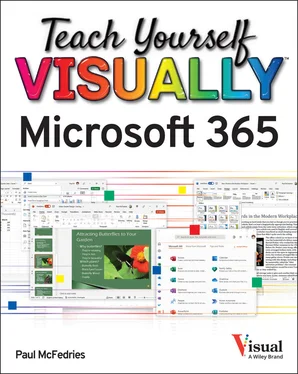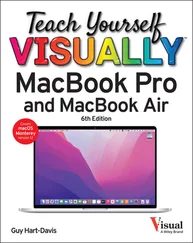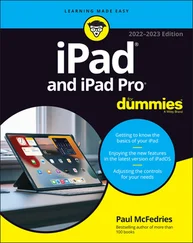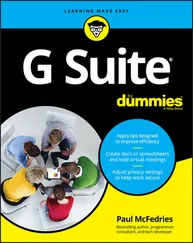285 282
286 283
287 284
288 285
289 286
290 287
291 288
292 289
293 290
294 291
295 292
296 293
297 294
298 295
299 296
300 297
301 298
302 299
303 300
304 301
305 302
306 303
307 304
308 305
309 306
310 307
311 308
312 309
313 310
314 311
315 312
316 313
317 314
318 315
319 316
320 317
321 318
322 319
323 320
324 321
325 322
326 323
327 324
328 325
329 326
330 327
331 328
332 329
333 330
334 331
335 332
336 333
337 334
338 335
339 336
340 337
341 338
342 339
PART I
Microsoft 365 Features
The Microsoft 365 applications share a common look and feel. You can find many of the same features in each program, such as the Ribbon, Quick Access Toolbar, program window controls, and the File tab. Many of the tasks you perform, such as creating and working with files, share the same processes and features throughout the Microsoft 365 suite. In this part, you learn how to navigate the common Microsoft 365 features and basic tasks.

Chapter 1: Microsoft 365 Basics
Chapter 2: Working with Files
Chapter 3: Microsoft 365 Graphics Tools
Chapter 4: Working with Microsoft 365 Files Online
CHAPTER 1
Microsoft 365 Basics
Start and Exit Microsoft 365 Apps
A Microsoft 365 installation creates an icon for each Microsoft 365 app either on the Start menu or in the All Apps list. To work with an app, you need to know how to launch the app on your PC. When you are finished with an app, you also need to know how to exit the app.
This section uses Word to demonstrate how to open an app from Windows 11. Once a Microsoft 365 app opens, its Start screen appears, where you can find a recent document or start a new document. For other ways to open or create a document, see Chapter 2.
Start and Exit Microsoft 365 Apps

 Click Start(
Click Start(  ).
).
The Start menu appears.
 Alternatively, you can click Search(
Alternatively, you can click Search(  ), type the name of the app, and then click the app in the search results.
), type the name of the app, and then click the app in the search results.
 Click the Microsoft 365 app you want to start.
Click the Microsoft 365 app you want to start.
Note: If you do not see the Microsoft 365 app you want, skip to step 3.
 Click All apps.
Click All apps.

Windows displays the All Apps list.
 Click the app you want to open.
Click the app you want to open.

The app launches and displays its Start screen.
 You can use the Home panel to start a blank document or open a recent document.
You can use the Home panel to start a blank document or open a recent document.
 You can use the New panel to start a new document.
You can use the New panel to start a new document.
 You can use the Open panel to open an existing document.
You can use the Open panel to open an existing document.
 This area indicates whether you have signed in to your Microsoft 365 subscription.
This area indicates whether you have signed in to your Microsoft 365 subscription.
Note: See Chapter 4for details about signing in to Microsoft 365.

 To exit the app, click the Closebutton (
To exit the app, click the Closebutton (  ).
).
Note: If you have multiple documents open, you must click Close(  ) for each file to exit the app.
) for each file to exit the app.
TIP
Can I create a shortcut to open a Microsoft 365 application?

Yes, you can pin the app to the Windows Start menu or taskbar. Follow steps 1 to 4 in this section, and then right-click the app name in the All Apps list. From the menu that appears, either click Pin to Startto add the app to the Pinned section of the Start menu or click Moreand then click Pin to taskbarto pin the app to the Windows taskbar. To open the app, click the app’s tile in the Pinned section of the Start menu or the app’s button on the taskbar.
Explore the App Window
All Microsoft 365 apps share a common appearance and many of the same features, and when you learn the features of one Microsoft 365 app window, you can use the same skills to navigate the windows of the other Microsoft 365 apps. These common features include the title bar, program window controls, zoom controls, and the Ribbon. The Ribbon is an important Microsoft 365 feature because it contains the app commands and features that you will use most often. You learn more about the Ribbon later in this chapter.

 Title Bar
Title Bar
Displays the name of the open file, the name of the Microsoft 365 app, and the AutoSave and Save buttons.
Читать дальше



 Click Start(
Click Start(  ).
). Alternatively, you can click Search(
Alternatively, you can click Search(  ), type the name of the app, and then click the app in the search results.
), type the name of the app, and then click the app in the search results. Click the Microsoft 365 app you want to start.
Click the Microsoft 365 app you want to start. Click All apps.
Click All apps.
 Click the app you want to open.
Click the app you want to open.
 You can use the Home panel to start a blank document or open a recent document.
You can use the Home panel to start a blank document or open a recent document. You can use the New panel to start a new document.
You can use the New panel to start a new document. You can use the Open panel to open an existing document.
You can use the Open panel to open an existing document. This area indicates whether you have signed in to your Microsoft 365 subscription.
This area indicates whether you have signed in to your Microsoft 365 subscription.
 To exit the app, click the Closebutton (
To exit the app, click the Closebutton (  ).
).












